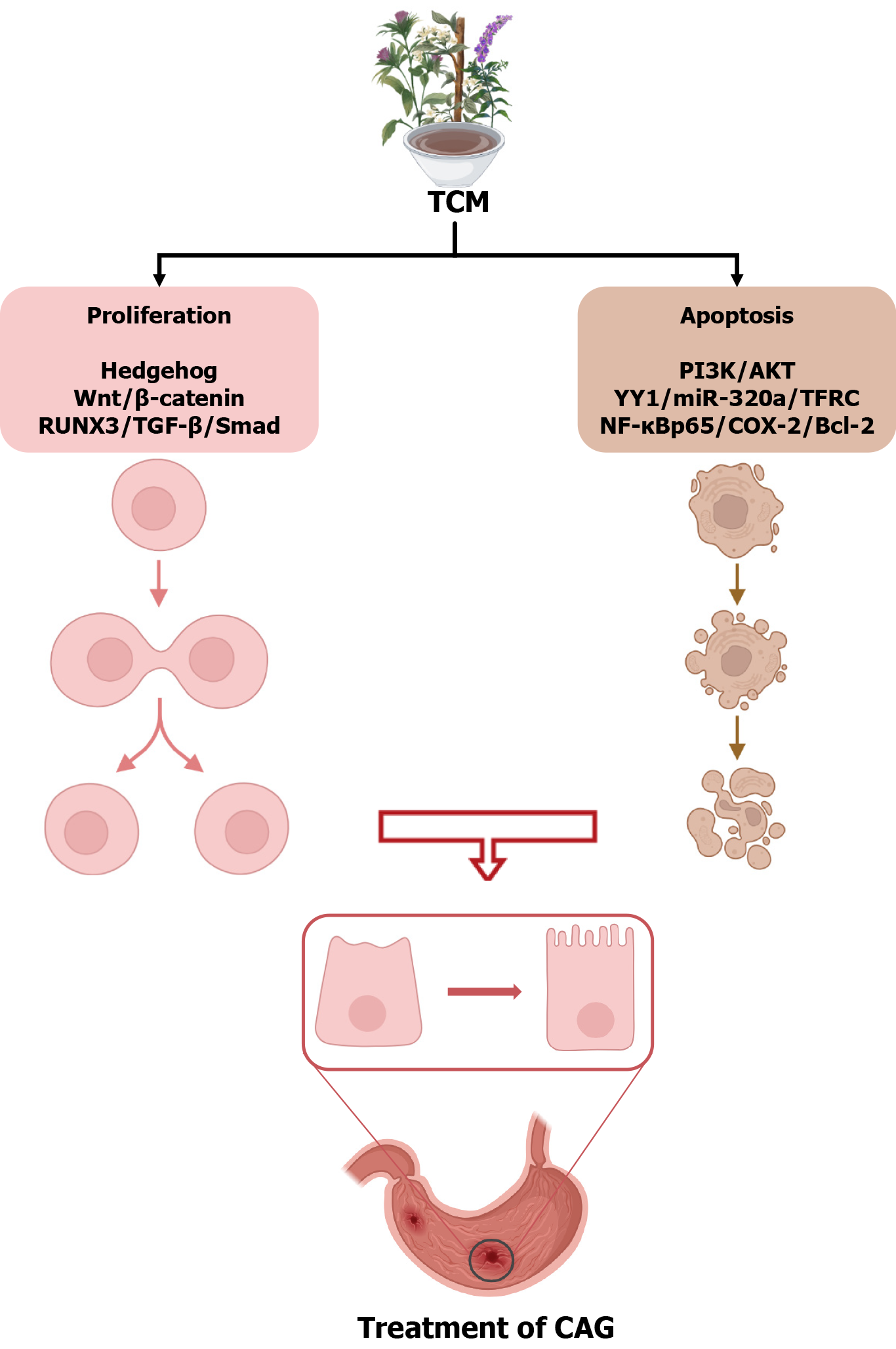Copyright
©The Author(s) 2025.
World J Gastroenterol. Mar 7, 2025; 31(9): 102053
Published online Mar 7, 2025. doi: 10.3748/wjg.v31.i9.102053
Published online Mar 7, 2025. doi: 10.3748/wjg.v31.i9.102053
Figure 4 Traditional Chinese medicine treats chronic atrophic gastritis from the proliferation and apoptosis of gastric mucosa cells perspective.
Traditional Chinese medicine promotes gastric cell proliferation via pathways such as Hedgehog, Wnt/β-catenin, and runt-related transcription factor 3/transforming growth factor-beta/Smad. Concurrently, it regulates apoptosis through the phosphoinositide 3-kinase/protein kinase B, YY1/miR-320a/transferrin receptor, and nuclear factor-kappaB p65/cyclooxygenase-2/B-cell lymphoma 2 pathways, thereby maintaining gastric mucosal health and preventing the progression of chronic atrophic gastritis. The picture highlights the role of traditional Chinese medicine in balancing cell proliferation and apoptosis to promote gastric mucosal repair. TCM: Traditional Chinese medicine; RUNX3: Runt-related transcription factor 3; TGF-β: Transforming growth factor-beta; PI3K: Phosphoinositide 3-kinase; AKT: Protein kinase b; TFRC: Transferrin receptor; NF-κB: Nuclear factor-kappaB; COX-2: Cyclooxygenase-2; Bcl-2: B-cell lymphoma 2; CAG: Chronic atrophic gastritis.
- Citation: Wang L, Lian YJ, Dong JS, Liu MK, Liu HL, Cao ZM, Wang QN, Lyu WL, Bai YN. Traditional Chinese medicine for chronic atrophic gastritis: Efficacy, mechanisms and targets. World J Gastroenterol 2025; 31(9): 102053
- URL: https://www.wjgnet.com/1007-9327/full/v31/i9/102053.htm
- DOI: https://dx.doi.org/10.3748/wjg.v31.i9.102053









